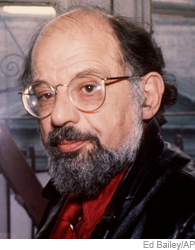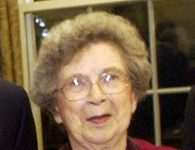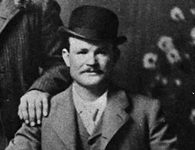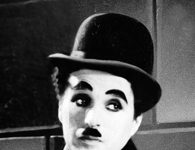Allen Ginsberg helped launch a literary revolution in the United States during the mid-20th century. As a central figure in the Beat generation, Ginsberg’s work dealt primarily with the taboo subjects of drug use and sexuality. His poem “Howl” landed him in court for obscenity, and his victory there helped expand the boundaries of what constituted acceptable literature in the United States.
Allen Ginsberg’s Early Days
Born on June 3, 1926, in Newark, New Jersey, to two members of the New York literary counterculture, Allen Ginsberg grew up among “progressive political perspectives,” writes the Academy of American Poets
His mother, Naomi, suffered from mental health problems. Ginsberg biographer Barry Miles wrote, “Naomi’s illness gave Allen an enormous empathy and tolerance for madness, neurosis, and psychosis.” As Ginsberg grew up, he favored the writings of Walt Whitman and Edgar Allan Poe.
He attended Columbia University to learn how to become a lawyer, but his interests soon gravitated toward literature and poetry instead. He also became friends with William Burroughs and Jack Kerouac, according to PBS.
Sources in this Story
- Academy of American Poets: Allen Ginsberg
- PBS: American Masters: Allen Ginsberg
- NPR: Revisiting Allen Ginsberg’s ‘Howl’ at 50
- The Allen Ginsberg Project
- The New York Times: Allen Ginsberg, Master Poet of Beat Generation, Dies at 70
Ginsberg’s Notable Accomplishments
Ginsberg helped to found the “Beat” generation of poetry with a group of colleagues including Kerouac and Burroughs, and they sought inspiration from jazz music.
According to PBS, many critics disagreed with the “irresponsible” nature of their lifestyles. Followers of the Beat movement favored a more open discussion of society than had previously occurred before.
Two of Ginsberg’s most notable works from this era are “Kaddish” and “Howl.” The numerous references to drug use and sexual acts—both heterosexual and homosexual—in “Howl” led to copies of the poem being seized by U.S. custom officials and the work’s publisher being tried for obscenity. Many writers and poets testified on the poems behalf, and the judge ruled that it had “redeeming social importance.”
The opening lines of “Howl,” beginning “I saw the best minds of my generation destroyed by madness,” still resonate with readers today. Ginsberg reflected on the poem’s creation in a 1985 interview with NPR.
Ginsberg worked in a variety of media. Certainly, he was a poet, but he was also a musician, photographer and visual artist. View some of his “doodles,” read from his lectures, see photos of him and by him, and watch video clips with Ginsberg at The Allen Ginsberg Project.
The Man and His Work
- “Collected Poems 1947-1997”
- “Howl: Original Draft Facsimile, Transcript, and Variant Versions”
- “Indian Journals”
- “The Letters of Allen Ginsberg,” edited by Bill Morgan
- “I Celebrate Myself: The Somewhat Private Life of Allen Ginsberg,” by Bill Morgan
The Rest of the Story
Ginsberg died in his apartment in April 1997 of liver cancer. He was 70 years old. “He was a pioneer of openness and a lifelong model of candor. He stood for freedom of expression and for coming out of all the closets long before others did,” said Burroughs. “He has influence because he said what he believed.”
This article was originally written by Lindsey Chapman; it was updated May 16, 2017.











